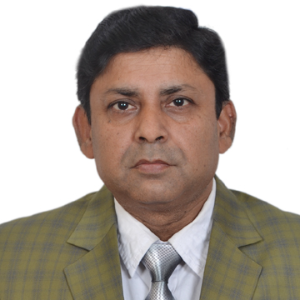Title : Freshwater pearl culture success in Nepal: Research update and future prospective
Abstract:
A pearl is beautiful, shiny and hard natural gemstone which growth inside the shell of a mussel. Freshwater pearl culture is one of the emerging areas in aquaculture sector. Nepal is rich in water resources and mussels. However, much is not known about the possibilities of pearl cultivation in Nepal. The mussel farming and pearl production technology seems lacking, but recently Nepal Agricultural Research Council (NARC) has initiated preliminaries studies on pearl cultivation at its Fisheries Research Station (FRS), Begnas, Pokhara started form year 2017. Thus, main aim was to find out the potentiality of pearl farming in Nepal. Locally available Lamellidens marginalis mussel was identified for the preliminary study. For this purpose Lamellidens marginalis mussel was collected from canal and brought them in laboratory of FRS, Begnas, Pokhara, initiated some simple experimentations of implanting beads and hanged them in small mesh nets for observation. The preliminary experiments demonstrated that the pearl farming could be possible in Nepal’s climatic conditions especially in tarai and mid hills of Nepal especially with Lamellidens marginalis, other species such as Lamellidens corrianus, Lamillidens jenkinsianus, Parreysia favidens, and Parreysia corrugate are also recommended for further studies. Initially, inserted bead was found successfully attached in the mantle cavity of the mussels, where they responded to grow white coated glister as the initial stages of pearl. From the powder of shells of dead mussels, procedure to make beads for deigned pearl (image of god Budha, Ganesh etc) and half round pearl successfully developed. After the continued experiments, final stage designer pearl and half round pearl was harvested form the implanted mussels which were cultured for 18 months in the Rupa Lake and ponds of FRS, Begnas. This is the first report of successful harvest of freshwater as designer and half round pearl in Nepal. This success of freshwater pearl technology at FRS, Begnas was disseminated from many media of Nepal. These initial findings demonstrated that pearl farming could be an attractive approach research and development. With the advent of pearl farming technology, it is likely that the wider areas used for warm water fish farming could also be integrated with pearl culture for additional income, livelihood and human nutrition as well. These freshwater mussels are edible and consumed as a source of protein delicacy since tradition among many ethnic communities in many parts of Nepal. This paper highlights some of the most recent updates on the status of pearl farming research initiation in Nepal, mussel’s diversity in Nepal and future prospective.
Key words: mussels, pearl culture, Lamellidens marginalis, aquaculture
Audience take-away:
- They will know about Freshwater mussel’s Lamillidens marginalis
- They will insight with the pearl production in mussels
- They will know about the economic of pearl and uses
- They will know the uses of mussels.



